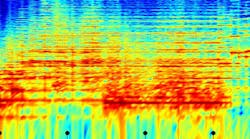Microwave measurements traditionally have involved transporting a device under test (DUT) into a test laboratory for study by the appropriate test instruments. But rapid improvements in portable RF/microwave test equipment have made it possible to bring any number of measurements to a DUT in the field. Of course, the test results from benchtop and portable test instruments must be properly correlated and, fortunately, Keysight Technologies shows the way in a 12-page application note titled “Correlating Microwave Measurements between Handheld and Benchtop Analyzers.”
Measurements are compared for the firm’s MXA benchtop signal analyzer and FieldFox portable signal analyzer. Measurements are maintained as consistently as possible where controllable, such as using the same video bandwidth (VBW) and resolution bandwidth (RBW) for each instrument’s set of measurements on a DUT and differing in test parameters, such as sweep speed, when those parameters were inherent functional differences of the different instruments.
Details are provided for comparing instrument specifications from data sheets, which tend to provide performance levels under a variety of different operating conditions, such as across a temperature range and/or only at room temperature or a narrow range of temperatures around room temperature (+25°C). The literature emphasizes the importance of correlating measurements made on different test platforms since a DUT may be analyzed across a number of different test instruments during its lifetime, from a prototype stage to in-field installation.
The application note does not attempt to steer readers toward using either a portable or a benchtop instrument for a particular measurement but, rather, provides enough information to achieve the most consistent, accurate results with each type of test tool, and results that can be trusted across a variety of operating conditions. For anyone considering the addition of a portable test instrument such as an MXA signal analyzer to a lineup of benchtop instruments, this application note serves as an excellent introduction to using both types of test instruments together, with optimum accuracy and effectiveness.
Keysight Technologies Inc., 1400 Fountaingrove Pkwy., Santa Rosa, CA 95403; (707) 577-2663
